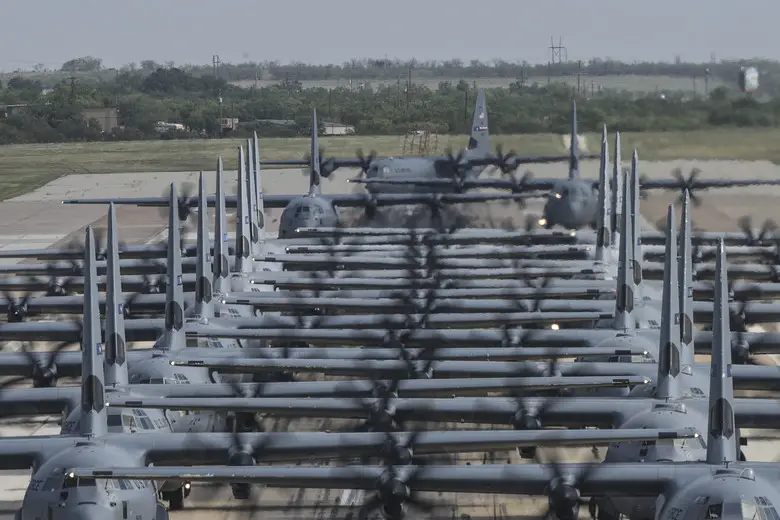The C-130 community rewrote history July 14, 2020, successfully piloting the largest formation flight ever of C-130J Super Hercules aircraft in support of a Joint Forcible Entry exercise over Dyess Air Force Base and Big Bend, Texas. In total, the “Herk Nation Stampede” featured a formation flight of 24 aircraft from the 317th Airlift Wing based at Dyess AFB and nine aircraft from the 19th Airlift Wing based at Little Rock AFB, Arkansas, besting the previous mark of 20 J-models set in 2013. A B-1B Lancer from 7th Bomb Wing at Dyess AFB, joint terminal attack controllers from the 9th Air Support Operations Squadron at Fort Hood, Texas and an Army helicopter from the 3rd Cavalry Regiment in Fort Hood also participated in the exercise.

This training event validated Air Mobility Command’s mission to compete, deter and win…anyplace, anytime by demonstrating the ability to seize an airfield within a highly contested enemy environment. Geographically separated planners from both the 317th AW and 19th AW, designed a mission to have C-130J aircraft take off from their respective bases, combine mid-air into a larger formation and fly to specific airdrop locations to simulate the forced entry of U.S. Army paratroopers. The B-1B was integrated with the exercise planning, and executed a close air support mission with JTAC directed dynamic targeting to clear out and protect the drop zone objective area prior to the arrival of the C-130Js.

Moreover, the ability to launch almost every J-model assigned to Dyess and every available aircraft at Little Rock into the air on a single day relied heavily upon the efforts of both installation’s maintenance units — with initial planning and scheduling beginning weeks beforehand. Prior to takeoff, each aircraft took approximately eight hours of maintenance prep-work to make sure it was ready to launch. In addition to demonstrating mobility air forces ability to perform large-force employment and tactics, the historic inter-fly also served as a testament to the relationship forged between the airlift wings via the 4/12 deployment initiative.

0
The 4/12 has been a two-year project with the 19th Airlift Wing and 317th Airlift Wing working together to align the two wings under a full squadron deployment schedule, instead of having a portion of each C-130 unit always out the door. The coordinated effort ensures each squadron rotates deployments for four months followed by 12 months of dwell time. While one squadron is fulfilling their rotational deployment, the other three will be focused on sharpening readiness allowing more time to train. This directly supports AMC’s priority to recapitalize on existing capabilities to ensure delivery of strength and hope, now and in the future.
















